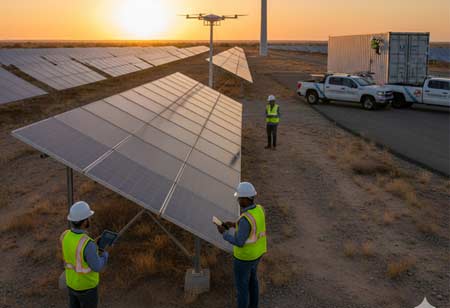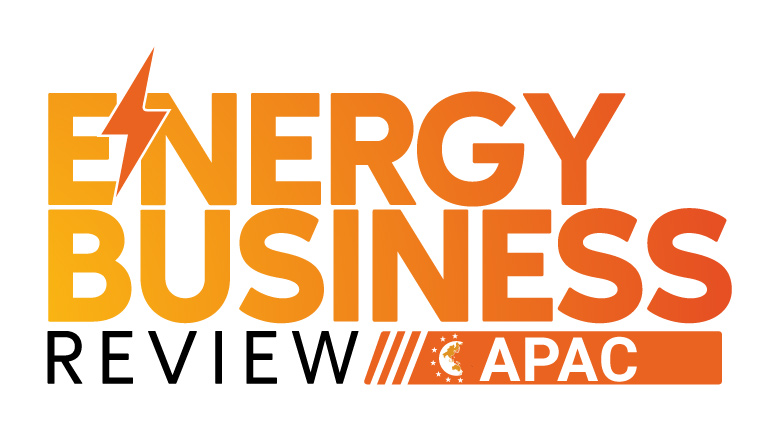Thank you for Subscribing to Energy Business Review Weekly Brief
Europe's Energy Transition: From Siloed Generation to Hybrid Asset Management
The European energy sector is shifting to hybrid asset management, integrating renewables and fossil fuels to enhance flexibility and optimise operational efficiency in energy production.

By
Energy Business Review | Friday, November 21, 2025
Stay ahead of the industry with exclusive feature stories on the top companies, expert insights and the latest news delivered straight to your inbox. Subscribe today.
The European energy landscape transcends the simple addition of renewable capacity. The industry is shifting from a model of distinct, siloed generation technologies toward a paradigm of hybrid asset management—a strategic approach in which the value lies not in individual electrons produced by wind, solar, or gas, but in the orchestrated interaction among them. The integration of traditional fossil fuel portfolios with variable renewables and storage has become the central operational challenge and economic opportunity for European utilities and asset managers.
The Strategic Pivot: From Baseload to Flexibility
For decades, the asset management philosophy in Europe was predicated on "baseload"—running large thermal plants flat-out to maximise utilisation. Today, that logic has inverted. Traditional energy portfolios are no longer viewed as static generation fleets but as balancing mechanisms necessary to support an intermittent renewable grid.
This shift is most visible in the management of existing gas-fired generation. Rather than being retired immediately, modern Combined Cycle Gas Turbines (CCGTs) are being repurposed for operational use. Asset managers are investing in retrofits that allow these massive machines to ramp up and down with unprecedented speed, effectively treating them as giant batteries. The economic model for these assets has moved from "energy-only" markets (selling kWh) to "capacity and ancillary services" markets (selling reliability and frequency response). In this hybrid portfolio, the gas plant serves as the hedge against the weather-dependent risk of wind and solar assets, creating a diversified risk profile that is more attractive to investors than pure-play renewables or pure-play fossil portfolios.
A defining trend in the current European market is the physical transformation of brownfield sites into Clean Energy Hubs. The industry is capitalising on the immense value locked in the grid connections of retiring coal and older gas plants. Instead of abandoning these sites, asset managers are leveraging their robust transmission infrastructure—which would take a decade to build from scratch—to host hybrid developments.
These hubs are becoming complex ecosystems where utility-scale battery energy storage systems (BESS) sit alongside new solar arrays and synchronous condensers (rotating machines that provide grid inertia without generating power). This approach solves one of Europe's most critical bottlenecks: grid congestion. By co-locating storage with generation behind a single connection point, operators can "peak shave"—storing excess solar electrons at noon and dispatching them in the evening using the same export cable that once carried coal power. This physical hybridisation is allowing legacy portfolios to transition their asset base without losing their prime real estate on the grid.
The Storage Bridge: Beyond Lithium-Ion
While lithium-ion batteries remain the workhorse of short-duration storage, the industry state-of-play is expanding into longer-duration and thermal storage technologies to bridge the gap between renewable supply and traditional demand.
In hybrid portfolios, storage is no longer just an arbitrage tool (buy low, sell high). It is being integrated as a yield optimiser. For example, solar assets are increasingly paired with 2-4 hour battery systems not just to shift energy, but to firm up the delivery profile, allowing variable solar farms to sign "baseload-like" Power Purchase Agreements (PPAs) that command a premium price.
Thermal storage is seeing a renaissance within traditional portfolios. Innovative projects are exploring converting decommissioned thermal plants into thermal batteries, using molten salt or hot rocks to store renewable heat that can then drive existing steam turbines. This allows asset owners to retain the mechanical side of their thermal plants (turbines, generators) while replacing the fossil-fuel boiler with a clean heat source, effectively decarbonising the asset while preserving the capital investment in the machinery.
Digital Orchestration: The Virtual Power Plant (VPP)
The glue holding these diverse assets together is software. The industry is witnessing a massive deployment of VPP technology. A VPP aggregates thousands of decentralised assets—a wind turbine in the North Sea, a battery in Bavaria, and a flexible gas peaker in Italy—and presents them to the grid operator as a single, dispatchable power plant.
This digital layer is where the proper "integration" happens. Advanced algorithms and Artificial Intelligence (AI) are now standard tools for portfolio managers. These systems ingest terabytes of weather data, market-pricing signals, and asset-health diagnostics to support real-time operational decisions. They determine whether a battery should charge immediately or whether a gas plant should ramp up generation, and they evaluate whether a wind farm should curtail output to avoid negative prices or instead divert excess energy into a co-located hydrogen electrolyser for storage.
The sophistication of these trading platforms has become a key competitive differentiator. Asset managers are moving away from manual dispatch towards automated, algorithmic trading that can capture value across multiple markets simultaneously—balancing the frequency of the grid while also selling energy in the day-ahead market.
The economic landscape for hybrid asset management is being reshaped by a move away from government subsidies toward merchant exposure. As feed-in tariffs expire, renewable assets are being forced to compete in the open market. This exposure creates volatility, which hybrid portfolios are uniquely designed to absorb.
The regulatory environment in Europe is slowly adapting to support this integration. New grid codes are beginning to recognise and remunerate "hybrid" connection points, allowing operators to share capacity between generation and storage more freely. However, the industry still navigates a complex web of capacity mechanisms that vary by country, requiring asset managers to be as adept at regulatory compliance as they are at engineering.
The lines between "renewable developer," "fossil fuel operator," and "technology provider" are blurring. The successful energy company is a hybrid asset manager that treats electrons as fungible commodities, regardless of their source. The transition is no longer about replacing one technology with another; it is about integrating them all into a unified, intelligent machine.






